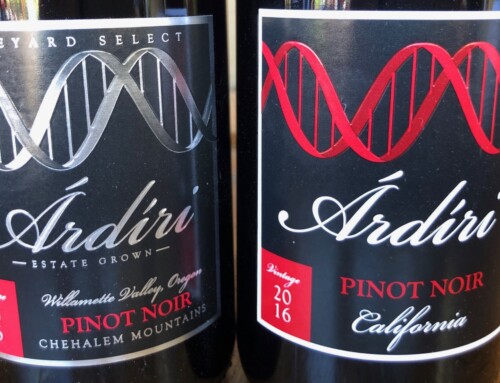Until the development of DNA sequencing, the best evidence for varietal origin of Pinot Noir came from physical comparison of the leaves and fruit of the vines with others, called “Ampelography.” Such data, for example, was very useful when cultivars diverged from a common ancestor via a mutation in the DNA of the vine. So, for example, the DNA of Pinot Noir developed mutations in the locus associated with the development of color. These changes resulted in the evolution of Pinot Gris and Pinot Blanc from the original Pinot Noir. Thus spontaneous mutations occur in an unstable portion of DNA of Pinot Noir to yield separate and distinct clones.
Mixing of two or more cultivars has also resulted in new cultivars. These have been studied through the DNA of other elements of the vine. These DNA markers include the DNA from the vine leaf’s chloroplasts as well as with mitochondrial DNA. It has been shown that the “parents” of Chardonnay are Pinot Noir and Gouais Blanc, and the parents of Cabernet Savignon are Cabernet Franc and Savignon Blanc. Pinot Noir itself is considered the possible progeny of a blend of Traminer and Meunier, although most of us believe that Meunier is just a clone of Pinot Noir.
Pinot Noir is considered one of the oldest vines, contributing its DNA to a multitude of cultivars, for example Gamay, Chardonnay, Muscat Blanc. So although we think of Pinot Noir as a single stable vine, its DNA thinks otherwise, yielding variation in both Pinot clones, as well as progeny in blended vines.



